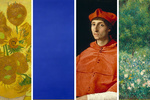This quilt is back from the quilters and she did a remarkable job on
the quilting! I'm really happy with the results. And Yes, it is finished in
one sense of the word--it's back from the quilters and the binding is on, but.........
It will be awhile before I sit to sew down the binding, which I usually do by hand
there are about four other quilts waiting for their binding to be stitched down. Now, there
are alternates to stitching by hand-- Here is a tutorial
One of my friends sews the binding on the BACK and brings it to the front
to stitch by machine--she does all her quilt bindings this way.
To each their own method. I prefer to sit and pat my quilt as I stitch--
This quilt is 2014 BOM 2014 - A-Z with Ewe and Me!
It only took me two years to finish--well, almost finished!


















